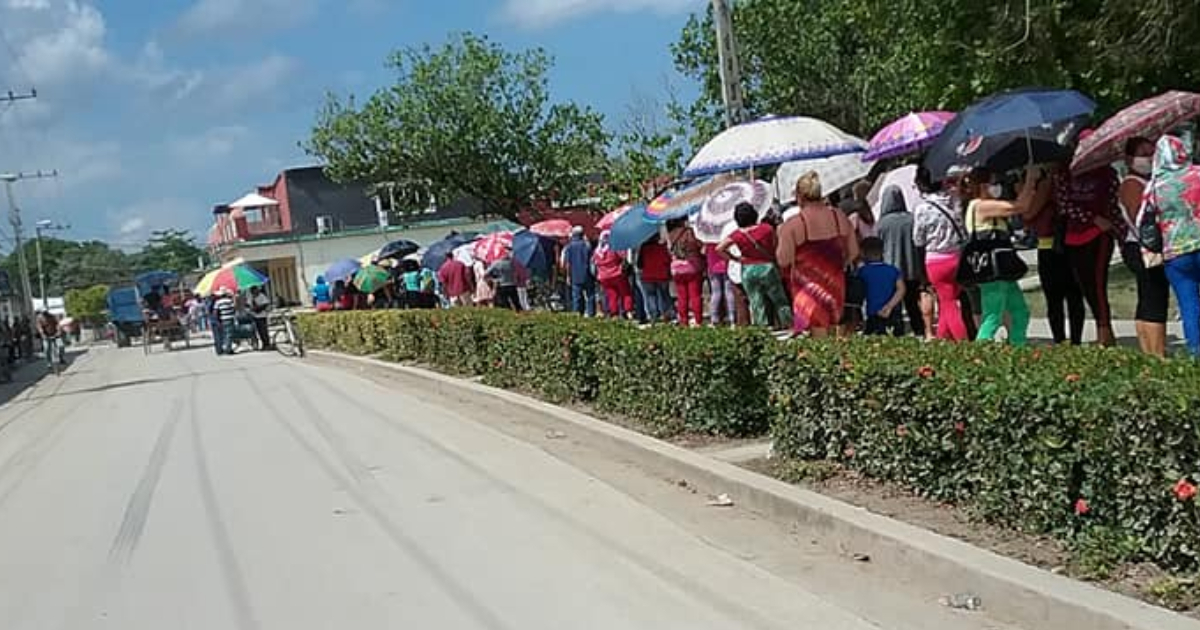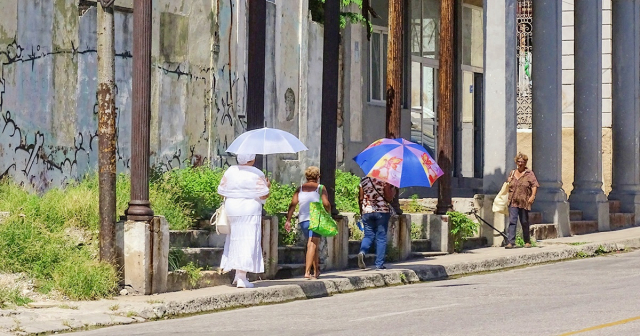
Wednesday afternoon was particularly hot in Cuba, where a total of 24 weather stations reported temperatures above 35 degrees Celsius.
According to the Forecast Center of the Meteorology Institute (INSMET), maximum temperatures between 33 and 36 °C were recorded. The highest value was 37.9 °C in Velasco, a locality in the municipality of Gibara, Holguín.
Throughout the day, the country was under the influence of high-pressure systems, which combined with low humidity levels resulted in scarce rainfall in most of the territory. However, it rained in Las Tunas during the night, with an accumulation of 15 millimeters.
The early hours from Wednesday to Thursday were warm, with minimum temperatures ranging from 23 to 26 degrees Celsius. The highest value was recorded at the Cabo de San Antonio station, with 27.9 degrees Celsius, and the lowest was 20.6 degrees Celsius in Santo Domingo, Villa Clara, as detailed in the report.
For this day, hot weather and isolated showers are expected in some locations in the interior of the eastern half starting in the afternoon, resulting from the intense daytime heating.
The afternoon will be very warm with maximum temperatures between 33 and 36 degrees Celsius, higher in some inland areas. At night, temperatures will be between 26 and 29 degrees Celsius, predicts the INSMET.
Cuba reached on Tuesday for the second time in its history, and within just a month, a temperature of 40 degrees Celsius, recorded in the municipality of Bolivia in Ciego de Ávila.
The specialist Bryam Pérez detailed that the automatic weather station located in that municipality in Ciego de Avila marked that value, to which the values of the stations in that province located in Primero de Enero and Falla are added, which marked 37.8 and 36.8, respectively.
In Camagüey, for the second time in May, the record for the highest temperature was broken reaching 37.3 degrees. The previous record was on May 11th, with 37.0.
Likewise, in Villa Clara, they broke their own temperature record in recent days.
The tragic thing is that these temperatures occur amid an unprecedented energy crisis in Cuba, where long power outages have the population in constant suffering, fearing that the closer summer approaches, the worse it will get.
At this moment, many families, including children, are sleeping on the streets in an attempt to get some rest during the night.
"Who explains to a child that they can't watch TV, that after sleeping poorly and enduring 16 hours (and more) of a power outage, they have to wake up to another power outage to go to school?" questioned activist Guelmi Abdul on Facebook.
"Who explains to a demented, bedridden elderly person that they must endure the heat with temperatures above 38 degrees Celsius?" he emphasized.
2023 was the hottest year in Cuba since 1951, with a temperature 1.38°C above the historical average of that variable, reported the Climate Center of the Meteorology Institute.
During that period, 91 records were set for maximum temperature, and July ranked as the hottest month of the period 1951-2023.
In addition, the percentage of warm nights was the highest since 1980 for the months of July, August, and November at most of the reference stations.






